chile
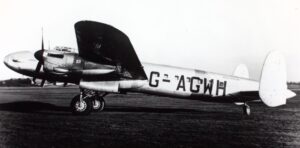 In 1998, two Argentine mountaineers climbing Mount Tupungato, which is about 60 miles west-southwest of Mendoza, and about 50 miles east of Santiago, made a strange discovery emerging from the glacial ice. Upon inspection, the “discovery” turned out to be the wreckage of a Rolls-Royce Merlin aircraft engine, along with twisted pieces of metal and shreds of clothing. It didn’t take long to realize that a plane had crashed here, but when and how did that plane crash at an elevation of 15,000 feet, into the Tupungato Glacier.
In 1998, two Argentine mountaineers climbing Mount Tupungato, which is about 60 miles west-southwest of Mendoza, and about 50 miles east of Santiago, made a strange discovery emerging from the glacial ice. Upon inspection, the “discovery” turned out to be the wreckage of a Rolls-Royce Merlin aircraft engine, along with twisted pieces of metal and shreds of clothing. It didn’t take long to realize that a plane had crashed here, but when and how did that plane crash at an elevation of 15,000 feet, into the Tupungato Glacier.
The find set off an Argentine Army expedition in 2000, during which additional wreckage was found, including a propeller and wheels (one of which had an intact and still inflated tire). The expedition also noted that the wreckage was well localized, which is indicative of a head-on impact with the ground, ruling out a mid-air explosion. In addition to the plane, the expedition found human remains, including three torsos, a foot in an ankle boot, and a manicured hand.
On August 2, 1947, a plane known as the Star Dust, operated by British South American Airlines, took off from Buenos Aires, Argentina, headed for Santiago, Chile. It never made it. After 51 years, the fate of the Star Dust was finally known, but how did it happen? A recovered propeller showed that the engine had been running at 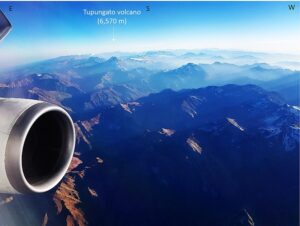 near-cruising speed at the time of the impact. The planes wheels were in a retracted state, meaning that the plane wasn’t coming in for a landing, emergency or planned. This was a controlled flight into terrain, whether planned or unplanned. It was determined that during the final portion of Star Dust’s flight, there would have been heavy clouds blocking the visibility to the ground. It is thought that because of the cloud cover and the resulting absence of visual sightings, that a large navigational error could have been made as the aircraft flew through the jet stream. This would not have been understood in 1947. High-altitude winds can blow at high speed in directions different from those of winds observed at ground level. If the airliner, which had to cross the Andes Mountain Range at 24,000 feet, had entered the jet-stream zone, which in this area normally blows from the west and south-west, resulting in the aircraft encountering a headwind, this would have significantly decreased the aircraft’s ground speed.
near-cruising speed at the time of the impact. The planes wheels were in a retracted state, meaning that the plane wasn’t coming in for a landing, emergency or planned. This was a controlled flight into terrain, whether planned or unplanned. It was determined that during the final portion of Star Dust’s flight, there would have been heavy clouds blocking the visibility to the ground. It is thought that because of the cloud cover and the resulting absence of visual sightings, that a large navigational error could have been made as the aircraft flew through the jet stream. This would not have been understood in 1947. High-altitude winds can blow at high speed in directions different from those of winds observed at ground level. If the airliner, which had to cross the Andes Mountain Range at 24,000 feet, had entered the jet-stream zone, which in this area normally blows from the west and south-west, resulting in the aircraft encountering a headwind, this would have significantly decreased the aircraft’s ground speed.
If the crew thought their airspeed was faster than it actually was, the crew may have deduced that they had already safely crossed the Andes, and so commenced their descent to Santiago, when in reality they were still a considerable distance to the east-north-east and were approaching the cloud-shrouded Tupungato Glacier at high speed. That theory is not well received by some BSAA pilots, who have expressed skepticism. They were convinced that Cook would not have started his descent without a positive indication that he had crossed the 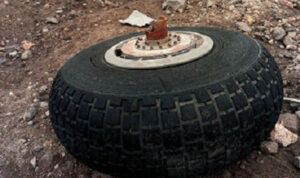 mountains, they have suggested that strong winds may have brought down the craft in some other way. One of the pilots recalled that “we had all been warned not to enter cloud over the mountains as the turbulence and icing posed too great a threat.”
mountains, they have suggested that strong winds may have brought down the craft in some other way. One of the pilots recalled that “we had all been warned not to enter cloud over the mountains as the turbulence and icing posed too great a threat.”
A 2000 Argentine Air Force investigation cleared Captain Cook of any blame, concluding that the crash had resulted from “a heavy snowstorm” and “very cloudy weather,” as a result of which the crew “were unable to correct their positioning.” By 2002, the bodies of five of the eight British victims had been identified through DNA testing.
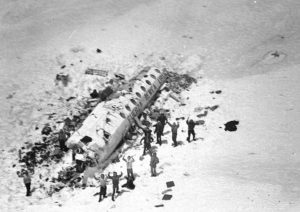
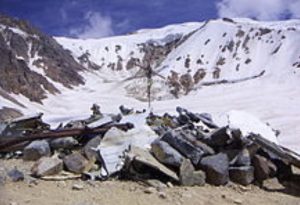 Years ago, I watched a movie about the survivors of a Uruguayan plane that crashed in the Andes Mountains. The crash and the survival amazed me, because against all odds, the 16 men who were rescued on December 22, 1972 had survived 72 days on a glacier at 11,710 feet in the bitter cold. The plane, a Fairchild FH-227D, was a chartered Uruguayan Air Force plane, designated as Flight 571, carrying 45 people. The flight carrying 19 members of a rugby team, family, supporters, and friends, took off from Montevideo, Uruguay on Friday, October 13, 1972, en route to Santiago, Chile. An error in the pilot’s calculations caused the plane to turn north too soon from the mountain pass it was going through, and put it on a collision course with the mountain peaks on either side of it. There were initially 28 people who survived the crash, but injuries, bitter cold, and an avalanche took the lives of all but the 16 who were rescued. The rescue might never have happened had not Nando Parrado and Roberto Canessa make the trek from the glacier known before the crash as the Valley of Tears, in the Cordillera.
Years ago, I watched a movie about the survivors of a Uruguayan plane that crashed in the Andes Mountains. The crash and the survival amazed me, because against all odds, the 16 men who were rescued on December 22, 1972 had survived 72 days on a glacier at 11,710 feet in the bitter cold. The plane, a Fairchild FH-227D, was a chartered Uruguayan Air Force plane, designated as Flight 571, carrying 45 people. The flight carrying 19 members of a rugby team, family, supporters, and friends, took off from Montevideo, Uruguay on Friday, October 13, 1972, en route to Santiago, Chile. An error in the pilot’s calculations caused the plane to turn north too soon from the mountain pass it was going through, and put it on a collision course with the mountain peaks on either side of it. There were initially 28 people who survived the crash, but injuries, bitter cold, and an avalanche took the lives of all but the 16 who were rescued. The rescue might never have happened had not Nando Parrado and Roberto Canessa make the trek from the glacier known before the crash as the Valley of Tears, in the Cordillera.
Recently I read another book on the flight, called Out Of The Silence: After The Crash by Eduardo Strauch, one of the survivors of the crash. The book was very good, and while it didn’t tell more than the movie had shown exactly, it put a very different perspective on the dire situation of the survivors, and the faith of the survivors and their loved ones, waiting at home for news. The book talked about the many premonitions, visions, and dreams that came out of the endless hours of waiting. It spoke of the several people who had a premonition before takeoff that the plane might crash. It spoke of the mother, who at the time of the crash had a vision of her son sitting in the plane seat covered in blood. She said that he looked like he was sleeping and she knew that he had died…she was right. It spoke of another mother who saw her son with just a bruise on his head, but very much alive. He was, and the bruise was where she saw it. And it spoke of the vivid dream Nando had, of the survivors being rescued by Christmas…which they were.
The book reminded me of times in my own life when I have experienced such “foretelling of things to come.” Because of my deep religious convictions I struggle with things like psychics and I don’t believe in séances or talking to the dead, but rather that God tells us of things to come, a truth which is found in His Word, the Bible. I recalled the time that I was at my mom and dad’s house, and Dad was at work. The phone rang, and I suddenly got an uncomfortable feeling that something had happened to my dad. I discounted it when the call on the phone that seemingly brought the feeling about, turned out to be something else. I went home, and when I got there, my mom called to tell me that a heavy steel beam had fallen on my dad’s foot, crushing his little toe, which is not protected by the steel toe on a boot. I have since marveled at the fact that I had that feeling at the precise time of the accident.
Mom also had such a “telling of things to come” after my Dad became ill in Canada, while they and my sister Cheryl were on vacation, driving on the north shore of Lake Superior. My sisters, Caryl, Alena, Allyn, and I had rushed to Canada to be with the them and hold vigil over our very ill dad. One night, Mom woke us all up saying that we needed to pack up, because we were going to be taking Dad home that day. At the time we thought that she was in a state of crazed delirium, due to the stress and seriousness of the situation. While listening to Nando’s announcement to his friends upon awaking from his dream on that mountain, saying that they would be home by Christmas, it occurred to me that while her timing was off, my mom was right in that Dad would leave that place and come back to his life here.
It is a very strange thing to know that God has spoken to you in such a way, and many people do not even believe that it happened, but too many of these incidences have taken place to discount them. There were 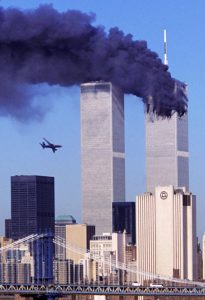
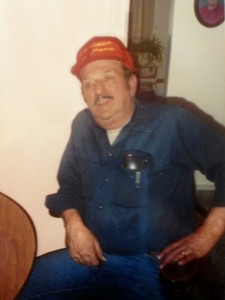 several people who worked in the World Trade Center on September 11, 2001, who were told by God not to go to work that day. Those who obeyed, were later shocked by what took place, and the part they might have played in those events. There was also a woman in the second tower, who when the announcement was made to return to their offices, was told by God to “get out of there and take as many people with her as she could.” She obeyed and saved a number of people who chose to listen to her warning that they must leave immediately. Whatever you choose to call these events, they are real, and while we never know at the moment they come, if we will look foolish for listening to them, or be exonerated when things play out exactly as we saw them…we find ourselves in the position of making a choice to listen or not to…come what may.
several people who worked in the World Trade Center on September 11, 2001, who were told by God not to go to work that day. Those who obeyed, were later shocked by what took place, and the part they might have played in those events. There was also a woman in the second tower, who when the announcement was made to return to their offices, was told by God to “get out of there and take as many people with her as she could.” She obeyed and saved a number of people who chose to listen to her warning that they must leave immediately. Whatever you choose to call these events, they are real, and while we never know at the moment they come, if we will look foolish for listening to them, or be exonerated when things play out exactly as we saw them…we find ourselves in the position of making a choice to listen or not to…come what may.

